lucky duck
I had the good fortune of being given more than a dozen cooked duck legs and thighs to use however I choose! (Thank you, Barbara!) What to do with this unexpected treasure? I decided to shred off all the meat and reserved it for a recipe I shall post tomorrow and then use all the bones to make luscious, gelatinous (as seen above), and luxurious duck stock. Having a load of duck stock in your freezer is akin to having a trust fund at your disposal. A good duck stock can be the base for wonderful soups, stews, ragouts, cassoulets, and sauces. If you do not have enough duck pieces, use a mixture of 75% duck bones and 25% chicken bones. The stock can be stored in the freezer for up to 1 year.
Some of the best soups are made with a combination of homemade duck and chicken stocks. I’ll use the duck stock to deglaze the pan for richer chicken and beef dishes, and it is fabulous as a component of out-of-this-world chicken pot pie. Unless you’re making duck soup, duck stock is generally used in smaller amounts due to its distinctive flavor and richness, so freeze it in small quantities, as seen here in muffin tins, so that it can easily throw it into dishes without having to defrost more than needed. The six cups of stock I made yielded 20 muffin cup-size portions.
A note on my complete and utter laziness … you’ll notice that I used carrot and celery pieces from some Costco Chicken Soup purchased for Marissa and myself, instead of driving to the store to purchase those two necessities. What can I say, I don’t feel all that swell with my swollen head and I generally pick out the carrots from my chicken soup anyhow, so what the heck!
Rich Duck Stock
2 pounds of duck bones or carcass
1 large onion, peeled and roughly chopped
2 or 3 carrots, peeled and chopped
2 celery stalks, chopped
1/4 cup red wine vinegar
1 cup dry red wine
1 large tomato, halved or 1 cup roasted cherry tomatoes
6 whole black peppercorns
1 garlic clove, peeled and crushed gently (omit if using roasted tomatoes)
1 bay leaf
6 thyme sprigs
Handful parsley sprigs
Preheat the oven to 400 degrees. Break up or crack the carcasses, if used, and spread out bones onto a large baking sheet or roasting pan. Brown the bones for 15 minutes, turning once or twice.
Transfer the bones to a large stockpot. Add fresh cold water to cover and slowly bring to a boil.
Meanwhile, pour off all but 2 tablespoons of fat from the pan. Scatter the carrots, onions, and celery in the pan; toss to coat lightly with fat. Return to the oven for 30 minutes to brown, turning the vegetables once or twice. If using a fresh tomato instead of the roasted cherry tomatoes, change the oven from bake to broil. If using the roasted tomatoes, turn off the oven
Transfer the browned vegetables to the stock pot. Deglaze the roasting pan with vinegar and wine, scraping up any brown bits that cling to the bottom and sides of the pan. Boil until reduced to ¾ cup, and add to stock pot.
Place the tomatoes, cut sides up, in the roasting pan or baking sheet, and broil until nicely browned 5 to 7 minutes. Add to stock pot.
Add the peppercorns, garlic (if used), bay leaf, thyme, and parsley to the stock pot. Simmer, partially covered, for 4 hours. If at any time the bones and vegetables are not covered with liquid, add enough water to cover.
Strain the stock through a very fine sieve or a colander lined with several thicknesses of damp cheesecloth, pressing on the solids to extract as much liquid as possible. Set aside to cool to room temperature and then chill until the fat congeals.
Carefully remove all the fat.
Spoon into muffin tins, freeze the tins, then pop out the duck stock “muffins” and place them in freezer-strength zip-lock gallon-size bags. Mark the bags with the contents and date and return them to the freezer immediately.
Makes about 5-6 cups

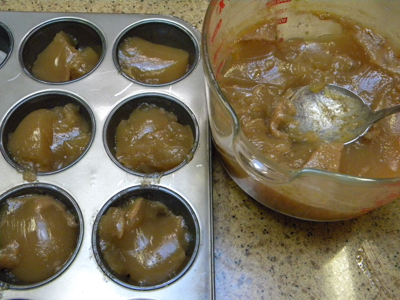
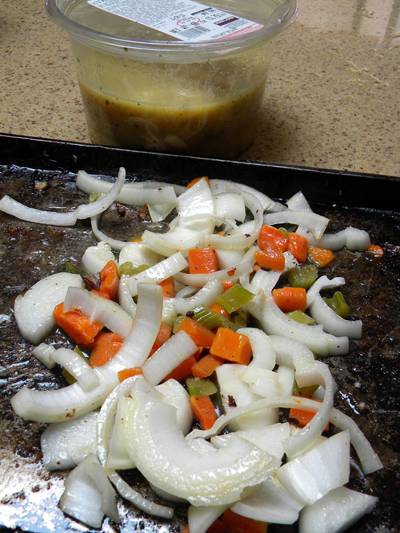

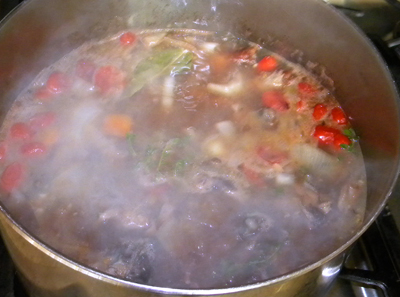
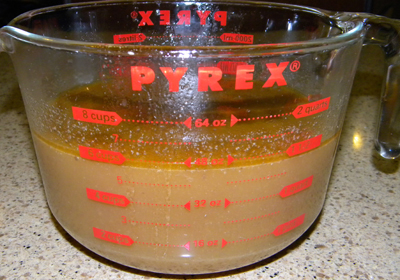
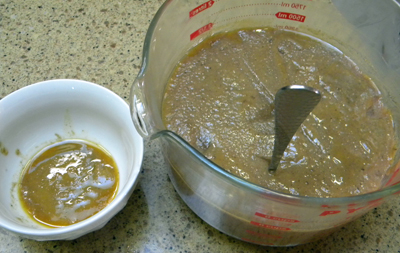




0 comments
Kick things off by filling out the form below.
Leave a Comment